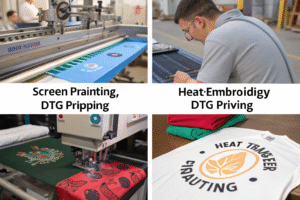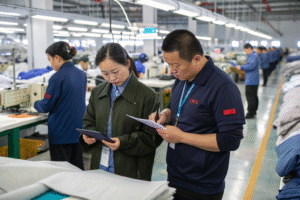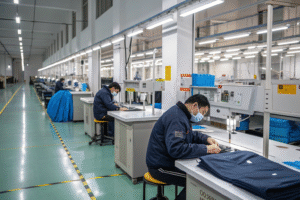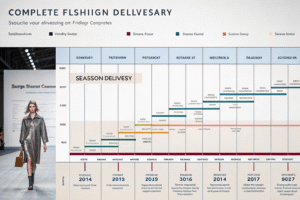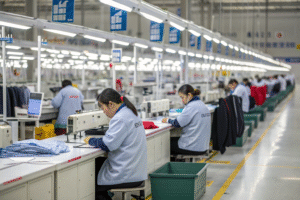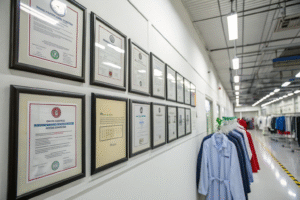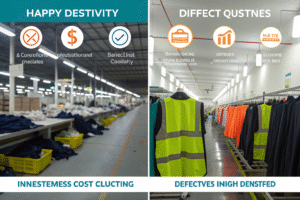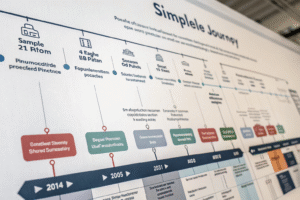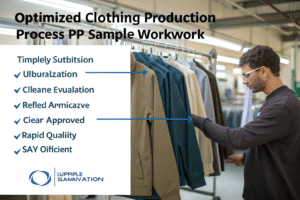Launching a fashion line without a tech pack is like driving cross-country without a map. You may move forward, but chances are you’ll get lost fast.
A tech pack is a detailed roadmap that transforms your clothing ideas into real, ready-to-sell garments by guiding factories with exact specs.
If you want fewer sampling errors, faster production, and clear communication with your manufacturer, understanding the tech pack is your best starting point.
What to Include in a Clothing Tech Pack?
New brands often send manufacturers a few images and a size guess. That leads to delays, confusion, and unexpected samples. The fix? A complete tech pack.
A full tech pack includes design sketches, measurements, materials, colorways, trims, labels, packaging details, and any print or embroidery instructions.

What details must be included in a clothing tech pack to avoid production mistakes and rework?
The more precise the tech pack, the fewer surprises during production. A well-made tech pack helps prevent communication issues. It tells the factory everything they need to make your clothing exactly how you want. Even if your supplier changes, your tech pack stays the same. That means you won’t need to explain your product from scratch every time.
Which parts of a clothing tech pack make the biggest difference in bulk production quality?
Here’s a breakdown of key parts to include:
| Section | Description |
|---|---|
| Technical Sketches | Front, back, side views with clear outlines |
| Size Specs | Measurement chart with tolerances for each size |
| Fabric & Trims | Material name, composition, supplier info |
| Colorways | Pantone codes and swatch references |
| Print/Embroidery | Artwork with placement, scale, and technique |
| Construction Details | Stitch type, seam finishes, edge treatments |
| Labeling & Tags | Placement and artwork of brand labels |
| Packaging Instructions | Folding style, polybag size, carton dimensions |
Even if you think some of these parts aren’t critical now, they will be when your orders grow.
Why Tech Packs Are Essential for Manufacturers?
Factories are not mind readers. Even the best manufacturer can’t guess what your garment should look like unless you tell them clearly.
Tech packs give manufacturers the precise instructions they need to produce your garment with accuracy, consistency, and speed.

How do tech packs help manufacturers reduce errors and improve sampling speed?
When factories receive unclear design info, they spend more time asking questions, making assumptions, and reworking samples. That slows down your launch. A tech pack changes all that. It becomes a checklist. Fabric buyers, pattern makers, and sewing teams all work from the same source. Your samples arrive faster, closer to your vision, and with fewer revisions.
Why do factories often prefer working with clients who provide tech packs?
Factories want smooth workflows. When they see a tech pack, they know you’re serious. It saves them time and reduces waste. They’re also more likely to offer better prices when they don’t need to spend hours fixing unclear instructions. That’s especially true in busy seasons, when factories prioritize reliable clients.
How to Create a Tech Pack for Apparel Production?
Many startups wonder whether to hire someone or do it themselves. The truth is, either path works — as long as the result is a clear, complete tech pack.
To create a tech pack, use software like Illustrator and Excel, follow a structured template, and describe every product detail needed by your factory.

What steps should I follow to create a tech pack that manufacturers will take seriously?
Start with your sketches. They don’t need to be perfect, but they should show every view. Then add a spec chart — at least for your base size. Pick your fabric and trims and write down where you sourced them. Add construction notes and label placements. Finally, include your packaging instructions. You can use tools like:
| Tool | Use Case | Notes |
|---|---|---|
| Adobe Illustrator | Create clean vector sketches | Standard for fashion |
| Excel or Sheets | Build size spec charts, cost sheets | Easy and flexible |
| Techpacker | All-in-one tech pack creation | Great for scaling brands |
Should I outsource my tech pack, or try building it in-house for the first collection?
If you’re tight on time or don’t have a design background, hiring a tech pack expert can save you weeks of frustration. Freelancers with fashion experience will ask the right questions and know what your factory needs. However, if you plan to build multiple collections, learning the basics of tech pack creation gives you more control over your designs and timelines.
Common Mistakes to Avoid in Fashion Tech Packs?
Tech packs are supposed to reduce problems, not create more. But when done poorly, they can confuse your supplier even more.
Common mistakes include missing measurements, unclear construction details, outdated revisions, and not aligning visual sketches with written notes.

Why do most first-time brands create tech packs that confuse more than help?
It often starts with a good idea but poor formatting. For example, your sketch shows a pocket, but the spec sheet doesn’t list the size. Or you change your mind about the hemline but forget to update the drawing. These conflicts cause confusion. When your tech pack says one thing and your email says another, factories don’t know which one to follow. That creates mistakes and delays.
What are some simple habits that help avoid mistakes in fashion tech packs?
Here’s what I’ve learned works best:
| Habit | How It Helps |
|---|---|
| Version Control | Keeps your updates organized and traceable |
| Double-Check Sketches | Ensures all features match your written details |
| Use Consistent Terminology | Reduces confusion across teams and languages |
| Include Tolerances | Gives the factory room for minor variation |
| Save in PDF Format | Keeps formatting clean and shareable |
As a rule, always treat your tech pack like a product manual. Clear. Consistent. Up to date. That’s what gives manufacturers confidence to produce your styles accurately.
Conclusion
A complete tech pack makes your fashion idea production-ready. When you include the right details and avoid common errors, your samples improve, and your timelines shorten.




